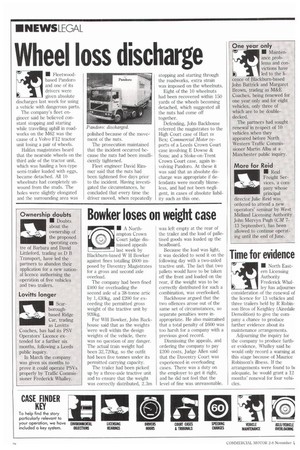Wheel loss discharge
Page 28

If you've noticed an error in this article please click here to report it so we can fix it.
1 . Fleetwoodbased Pandoro and one of its drivers were given absolute discharges last week for using a vehicle with dangerous parts.
The company's fleet engineer said he believed constant stopping and starting while travelling uphill in roadworks on the M62 was the cause of a Volvo F12 tractor unit losing a pair of wheels.
Halifax magistrates heard that the nearside wheels on the third axle of the tractor unit, which was hauling a box-type semi-trailer loaded with eggs, became detached. All 10 wheelnuts had completely unwound from the studs. The holes were slightly elongated and the surrounding area was polished because of the movement of the nuts.
The prosecution maintained that the incident occurred because the nuts had been insufficiently tightened.
Fleet engineer David Rimmer said that the nuts had been tightened five days prior to the incident. Having investigated the circumstances, he concluded that every time the driver moved, when repeatedly stopping and starting through the roadworks, extra strain was imposed on the wheelnuts.
Eight of the 10 wheelnuts had been recovered within 150 yards of the wheels becoming detached, which suggested all the nuts had come off together.
Defending, John Backhouse referred the magistrates to the High Court case of Hart vs Bex; Commercial Motor reports of a Leeds Crown Court case involving .E Dowse & Sons; and a Stoke-on-Trent Crown Court case, again involving Pandoro. At these it was said that an absolute discharge was appropriate if defendants were morally blameless, and had not been negligent, in cases of absolute liability such as this one.


























































































































































